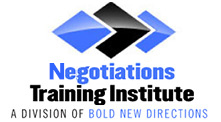There are plenty of strategies and tools to use when negotiating, but perhaps none are as effective as time. Time is a unique tool that can be used to move a stalled negotiation forward in order to help you achieve your desired outcome. Do keep in mind, however, that time is a tool that works for both sides so you should never forget it’s power. When used correctly, time pressure can lead to remarkable outcomes for negotiators, so here are a few ways you can use timing to your advantage.
- Figure Out the Right Time to Make a Deal
Unless you are forced to make a decision right away due to an urgent business need, you can wait for the right time to step in and negotiate a deal. It’s a proven fact that there are certain times when better deals can be made. Think about buying a car for example. Oftentimes you can get a better deal at the end of the month because the salesmen need to hit their quota and the dealerships need to sell a certain number of cars. The same is true for real estate. Buyers are more likely to negotiate during the winter months when housing sales are slower than in the peak of spring. When you are negotiating a business deal, some companies might be more willing to negotiate closer to the end of the quarter or the fiscal year when they are more motivated to close the deal. Therefore, consider your timing and choose a time that is most advantageous for you.
- Never Let the Negotiations Drag On
Negotiations are most effective when they happen over a short period of time. The longer the other party has to think about the deal, the more time they have to “shop around” for something better. The key is to leverage the amount of time the customer has to make a decision. For example, let them know that you are willing to offer a special price but you can only honor it for today. Otherwise, you will have to sell it to someone else. This time pressure strategy is an effective technique for getting the other party to close the deal.
- Choose the Right Time to Offer Concessions
Ideally, the initial stages of the negotiation should be spent learning about the other’s needs and trying to uncover what is motivating them. This gives you an idea of what to use as a bargaining tool. For example, if you know the other party is highly motivated by price, you know you have to be prepared to offer your best deal. The key, however, is knowing when to do it. Offering the lowest price right off the bat will make it look like you are willing to concede easily and they might push for other concessions as well. Therefore, wait until you are just about to close the deal and come in with that last ‘punch’ right at the end offering your best price. Even though you knew all along you could offer that price, that last minute price change makes your customer feel as though they are getting a deal.
- Strategically Plan the Time of the Negotiation
Imagine you are working on a large sale and you have to meet with the head of the factory. You schedule your meeting at 9:00 a.m. and the boss spends several hours haggling with you and refuses to back down. Now, imagine you had this same negatition scheduled at 4:00 in the afternoon. There’s a good chance that the boss will move things much faster because he is anxious to wrap up and head home for the day. When you enter into the negotiation, let your counterpart know that you have a limited amount of time with them before your next meeting. This can help speed things along and puts a little pressure on them to move forward.
